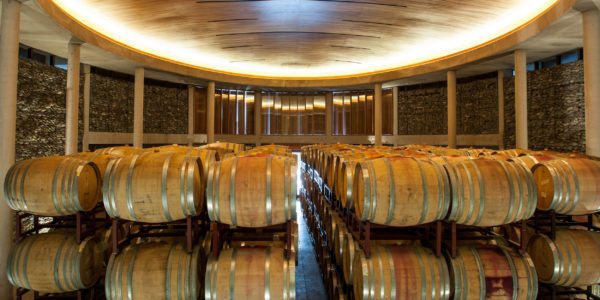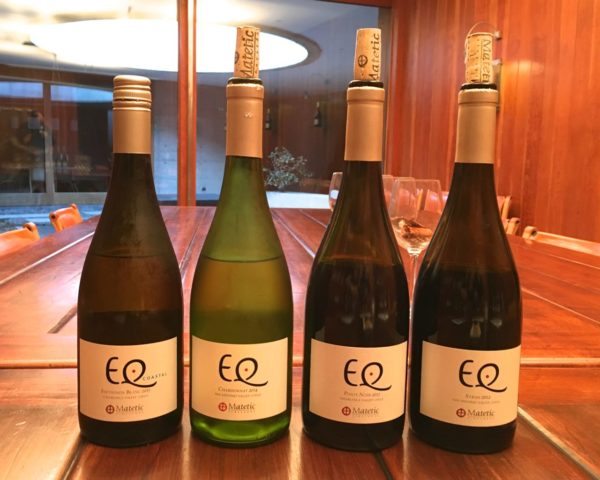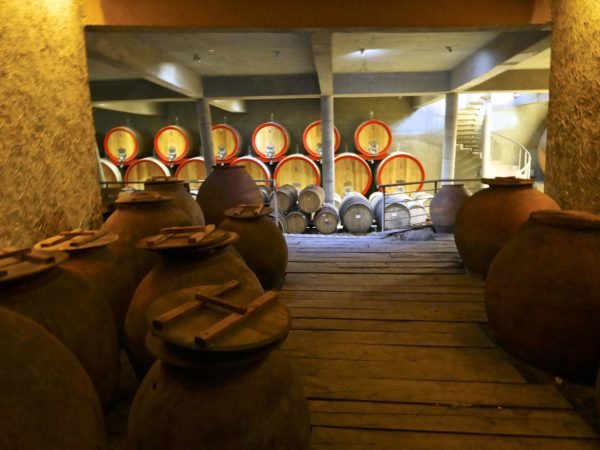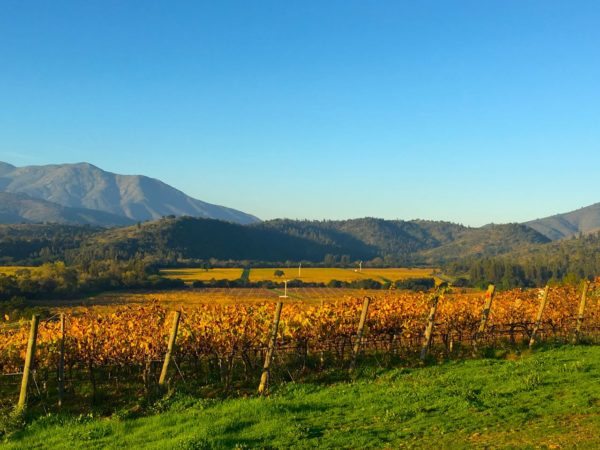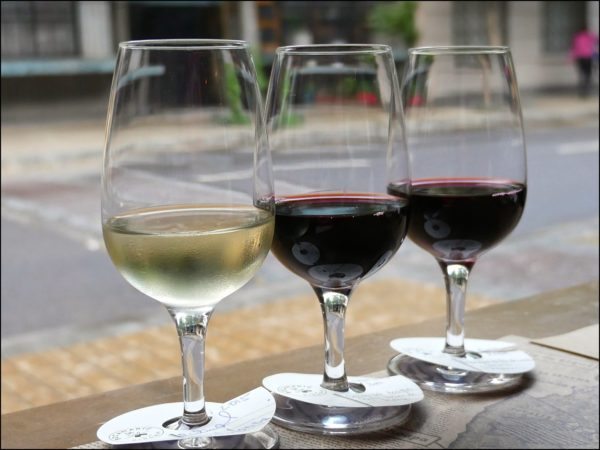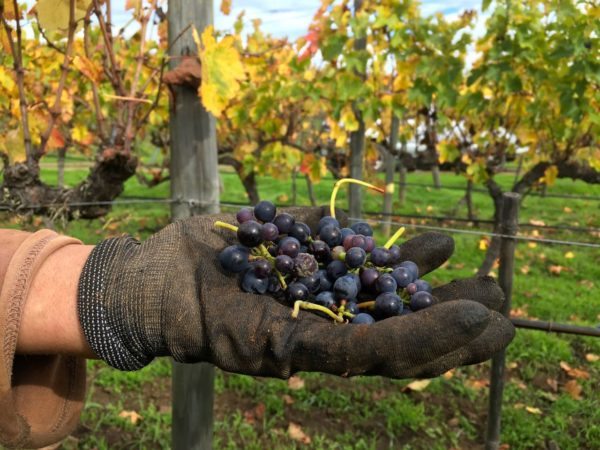Sucheta Rawal, a food and travel writer, chose her top wines from Chile during her Yampu trip.
–By Sucheta Rawal, Go Eat Give
I’ve been on many wine tours before, but nothing prepared me for the variety of good quality wines I enjoyed in Chile. In just two weeks, I drank hundreds of glasses of whites, rosés, and reds, from all over the country. Thankfully, I had a carefully planned itinerary and a designated driver courtesy of Yampu Tours, who took me to some of the best wineries around.
Chilean wines only broke into the international wine scene in the 1990s when some French visitors to the country discovered that the Carménère grape, which was once abundant in France, was flourishing in the South American country. Chile is now the fifth-largest exporter of wines in the world, and the ninth-largest producer.
There are over 70 wineries in Chile, so where do you start?
Casablanca Valley
Most tourists fly into the capital of Santiago and take day trips to its outskirts. One of the most popular wine-growing regions is Casablanca, located 60 miles northwest of the capital. There are 17 boutique wineries in the 19-mile area and over 75% of the white wines of Chile are grown here. With its proximity to the Pacific Ocean, the valley enjoys cooler climes, making it the ideal place for white wines. Sauvignon Blanc, Chardonnay, and Pinot Noir from this region are recognized as some of the best Chile has to offer.
MATETIC WINERY: Matetic is one of the few wineries farming in a completely organic and biodynamic manner. Instead of using pesticides, they allow sheep and geese to freely roam the vineyards to act as natural fertilizers. A regimental moon calendar is followed for pruning and harvesting. Though they produce excellent Chardonnay, Sauvignon Blanc, and Pinot Noir, Matetic was the first winery to introduce Syrah in this area. If you prefer some naps between wine tastings, stay overnight at a 1900s Spanish-style casona converted into a seven-room hotel, with each room named after a grape. The family-owned farm and vineyard extends for about 10 miles and offers absolute tranquility. Don’t be surprised if a private chopper lands in the garden just for a four-course wine paired lunch!
My top pick: Casas Del Bosque Gran Reserva 2013 Pinot Noir – It is a full bodied, dry red wine with layers of flavors. You can visit the vineyard for a full-on tasting.
Maule Valley
Located 150 miles south of Santiago, this central valley area is perhaps the country’s oldest wine-growing regions. Volcanic soil, heavy rainfall, and moderate temperatures lead to the production of soft, earthy reds. The grapes (known as En Cavasa) mature faster and closer to the ground. Powerful Cabernet Sauvignon and aromatic and spicy Carménère wines are produced in the Maule Valley.
RE BOUTIQUE (RE): Alhough RE opened in 2012, they make wine in a more ‘biblical’ way. Instead of using stainless steel, they ferment the grapes in cement and traditional clay pots that have been with the family for almost a 100 years, allowing for the wines to follow a natural process. The wines ripe in two months, as opposed to three years in oak barrels. As a result, inventive blends such as Pinotel, Chardnoir, and Syrahnoir are produced. What about the taste? It’s unique, interesting and delicious!
My top pick: Altamana 2014 Grande Reserve Malbec – Rich plum and blacberry flavors combined with peppery spice and a hint of clove, make this a perfect accompaniment to a Chilean steak dish.
RELATED: If you’re looking for places a bit closer to home to visit for wine tasting this summer, check out this article on some amazingly intoxicating US locations!
Maipo Valley
Known as the “Bordeaux of South America,” this is perhaps the most important wine region in Chile. The first vines in Maipo were planted in the 1500s by wealthy Chileans who frequented France and returned home to build French-style wine estates. Separated from Argentina by the Andes Mountains, Maipo receives low rainfall and warm temperatures. A wide range of grape varieties is planted in the Maipo Valley including Cabernet Sauvignon, Carménère, Merlot, Syrah, Chardonnay, and Sauvignon Blanc.
My top pick: Casillero del Diablo Carmenere Reserva 2014 – Smooth and delicate with intense color, and rich aromas of black currant and chocolate. This wine is great for starting a party when paired with aged cheese.
Elqui Valley
Located at the southern edge of the Atacama Desert, Elqui Valley is the northernmost wine region of Chile. Clear sunny days, hot and dry temperatures, and thin atmosphere account for the unique taste of the wines produced here. Because the grapes receive high levels of solar radiation, they are more intense and less acidic. Sauvignon, Syrah, Chardonnay, Carménère, and Pedro Ximénez are some of the wines produced in Elqui.
My top pick: Vinedos de Alcohuaz 2014 – This bottle is produced at Chile’s highest vineyard (220 meters). It has fruity and floral notes and goes really well with crostini of parmesan cheese and quince paste.
Colchagua Valley
Located in central Chile, the Colchagua Valley is fondly called “The New Napa Valley.” With Mediterranean climate and fertile soil irrigated by the Tinguiririca River, well-balanced red wines such as Cabernet Sauvignon, Carménère, and Syrah are produced in this area. Recently, a joint venture between Santa Rita and Rothschilds of Bordeaux has put the valley on the international map for producing some of the highest quality wines in the world.
My top pick: Vina Hacienda Araucano Francois Lurton/ Clos De Lolol 2012 Blend – Francois Lurton represents five generations of winemakers present in Bordeaux since 1897. Aromas of blackberries, black currants, and tobacco leaf finished with ripe tannins makes this a robust drink with red meat.
I found that practically all good hotels and restaurants across Chile, including the national airline carrier, LATAM Airlines served a good variety of Chilean wines. For a personalized journey across Chile, check out custom itineraries prepared by Yampu Tours.
See the original article here.
Tags:

